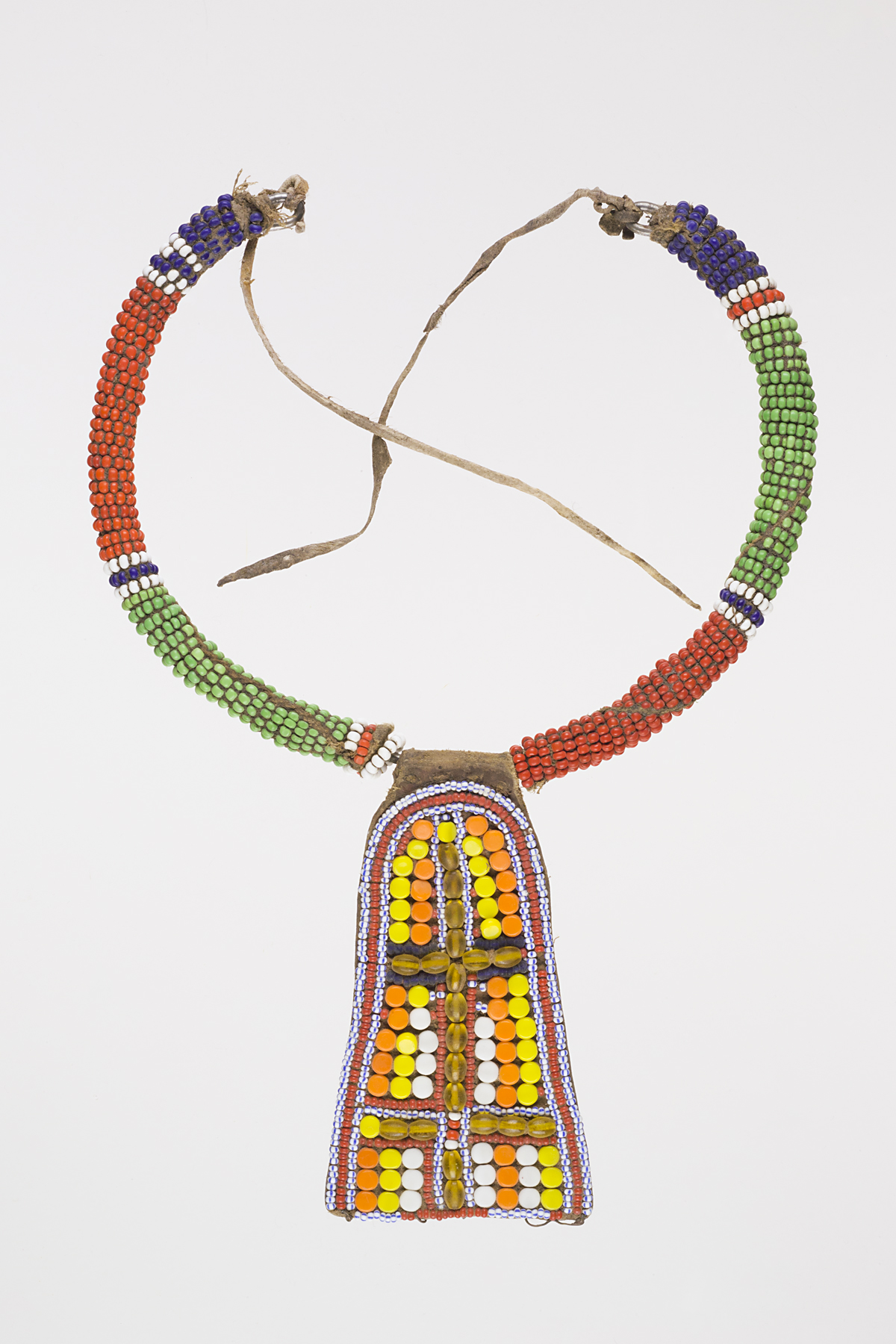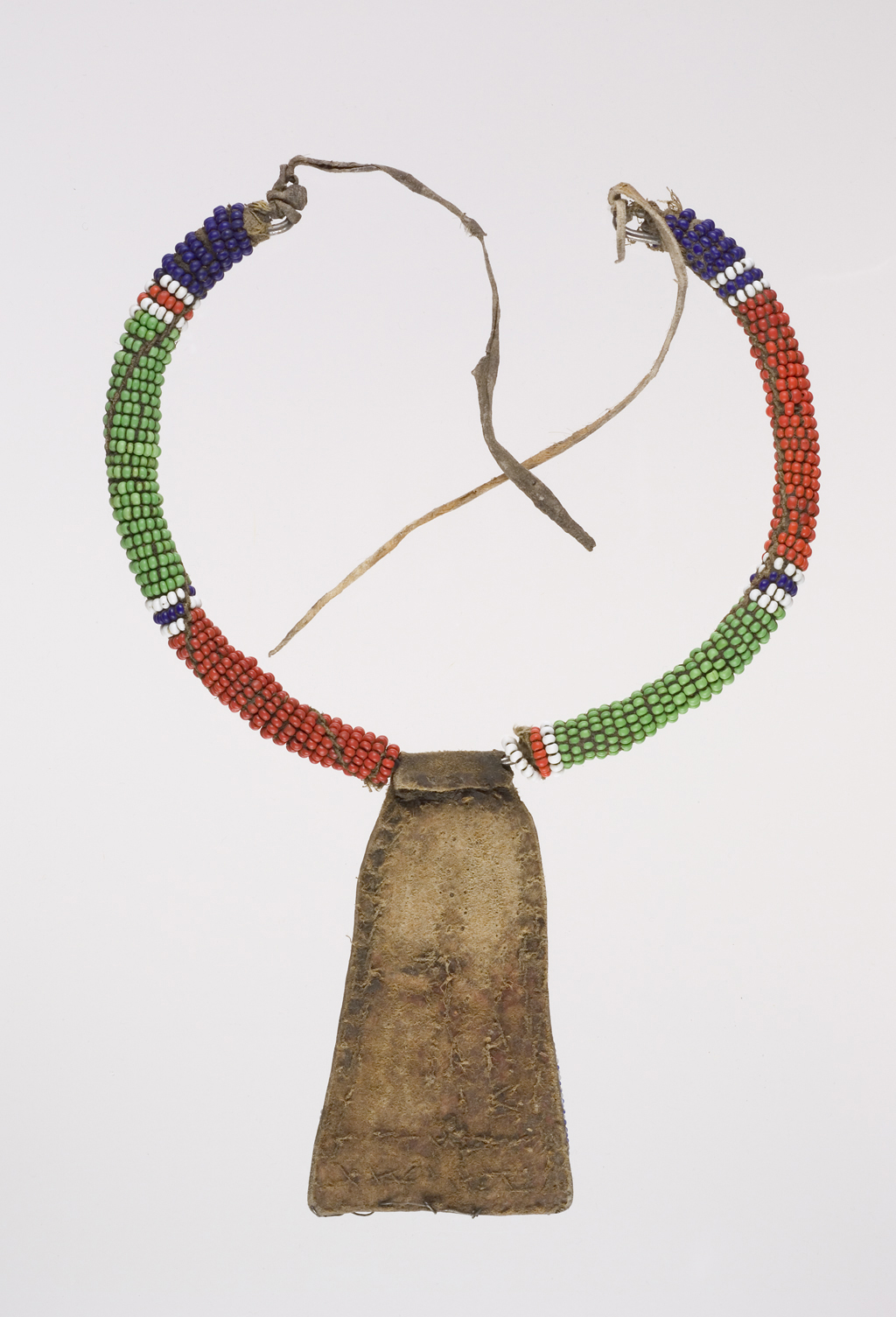necklace, unrecorded Maasai artist
Artwork Overview
unrecorded Maasai artist, artist
necklace,
late 1800s–1975
Where object was made: Kenya
Material/technique: leather; rawhide; metal; beads; wire
Dimensions:
Object Length/Diameter (Length x Diameter): 26 x 18 cm
Object Length/Diameter (Length x Diameter): 10 1/4 x 7 1/16 in
Object Length/Diameter (Length x Diameter): 26 x 18 cm
Object Length/Diameter (Length x Diameter): 10 1/4 x 7 1/16 in
Credit line: Anonymous gift
Accession number: 2007.0911
Not on display
If you wish to reproduce this image, please submit an image request



